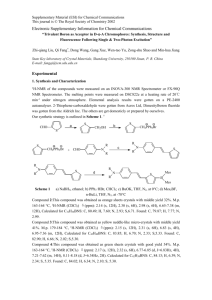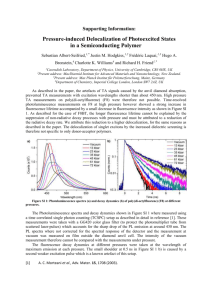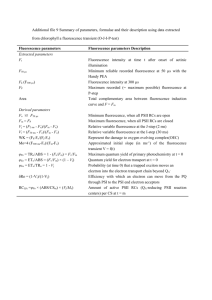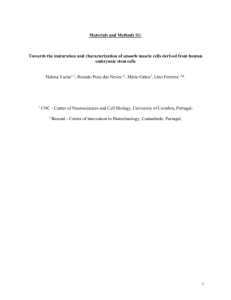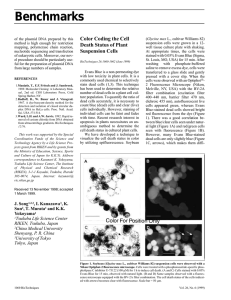C 344 Lab Report 1: Fluorescence On the next page are guidelines
advertisement
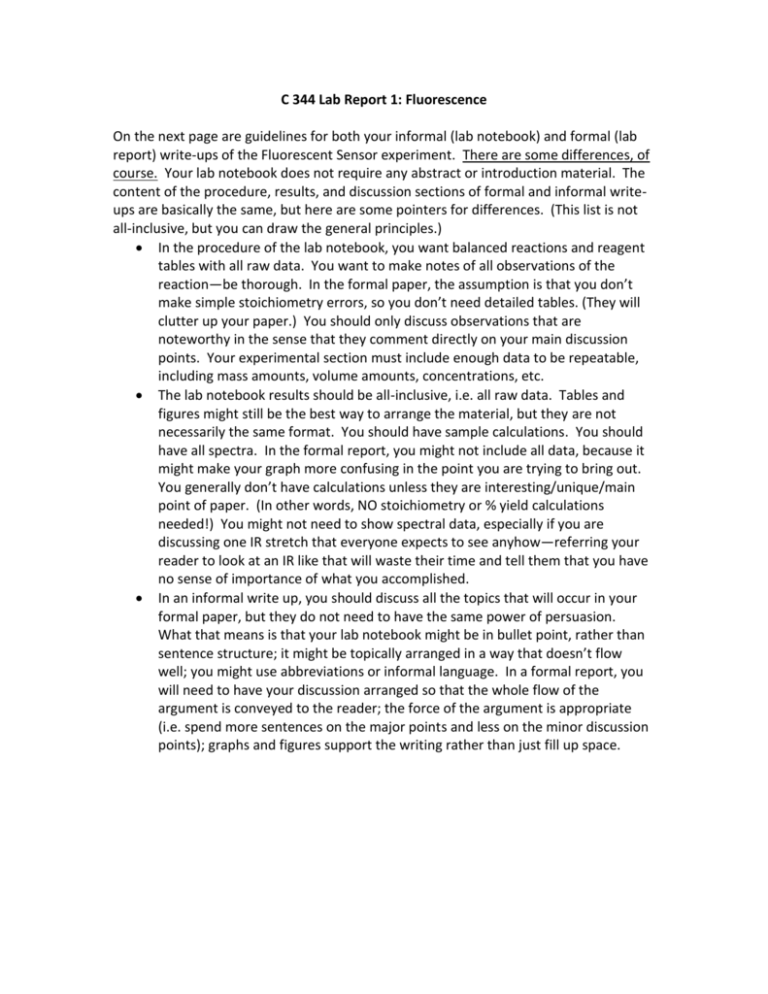
C 344 Lab Report 1: Fluorescence On the next page are guidelines for both your informal (lab notebook) and formal (lab report) write-ups of the Fluorescent Sensor experiment. There are some differences, of course. Your lab notebook does not require any abstract or introduction material. The content of the procedure, results, and discussion sections of formal and informal writeups are basically the same, but here are some pointers for differences. (This list is not all-inclusive, but you can draw the general principles.) In the procedure of the lab notebook, you want balanced reactions and reagent tables with all raw data. You want to make notes of all observations of the reaction—be thorough. In the formal paper, the assumption is that you don’t make simple stoichiometry errors, so you don’t need detailed tables. (They will clutter up your paper.) You should only discuss observations that are noteworthy in the sense that they comment directly on your main discussion points. Your experimental section must include enough data to be repeatable, including mass amounts, volume amounts, concentrations, etc. The lab notebook results should be all-inclusive, i.e. all raw data. Tables and figures might still be the best way to arrange the material, but they are not necessarily the same format. You should have sample calculations. You should have all spectra. In the formal report, you might not include all data, because it might make your graph more confusing in the point you are trying to bring out. You generally don’t have calculations unless they are interesting/unique/main point of paper. (In other words, NO stoichiometry or % yield calculations needed!) You might not need to show spectral data, especially if you are discussing one IR stretch that everyone expects to see anyhow—referring your reader to look at an IR like that will waste their time and tell them that you have no sense of importance of what you accomplished. In an informal write up, you should discuss all the topics that will occur in your formal paper, but they do not need to have the same power of persuasion. What that means is that your lab notebook might be in bullet point, rather than sentence structure; it might be topically arranged in a way that doesn’t flow well; you might use abbreviations or informal language. In a formal report, you will need to have your discussion arranged so that the whole flow of the argument is conveyed to the reader; the force of the argument is appropriate (i.e. spend more sentences on the major points and less on the minor discussion points); graphs and figures support the writing rather than just fill up space. Formal Lab Report Format: Address the following statements and questions in the indicated sections of your lab reports. 1. Name and Lab Section 2. Title 3. Abstract 4. Introduction: Acceptable (B/C range) papers will have primary literature references; A-level papers will have especially relevant references to make the introduction especially persuasive. Basic pointers: Introduce fluorescent sensors and discuss their relevance Introduce imidazo[1,5-a]pyridinium ion fluorophores (namely the sensors you have prepared) in the context of sensors and sensing mechanisms. 5. Results (Combined with discussion) Include descriptions of your in-class visual fluorescence analysis. Use the fluorescence data obtained/provided by your AI (excel format) to prepare a series of graphs. Compound A: 1) Overlay of fluorescence spectra as a function of pH. 2) Fluorescence at 385 nm vs. pH 3) Fluorescence at 516 nm vs. pH. Compound B: 1) Overlay of fluorescence spectra as a function of pH. 2) Fluorescence at 410 nm vs. pH. 5. Discussion (combined with results) Provide a detailed arrow pushing mechanism for each of the two reactions performed in week 1. What side product might you anticipate seeing in reaction A? Posit an explanation for why this side product is not observed. Although both reactions were allowed to go for ~1 week at room temperature, the reaction to form compound A is complete in 1 hour at room temperature with quantitative conversion and the reaction to form compound B is complete in ~4 hours at room temperature with 80-85% conversion (does not proceed to full conversion with increased time). Based on this information posit an explanation for the color differences observed between the two crude reaction mixtures. Using your spectral data confirm the identity of your compounds and assess their purity. Make sure to specify relevant peaks and use appropriate terminology. What accounts for the different fluorescence behavior observed between the two compounds? What are the relative merits of the two different sensing mechanisms? Provide a detailed description of an assay using compounds A and B to test the pH of water samples, use examples. Propose a new sensor based on this motif. Indicate what it swill be specific for and propose a synthetic scheme to access it. 6. Experimental 7. References Use ACS format.



